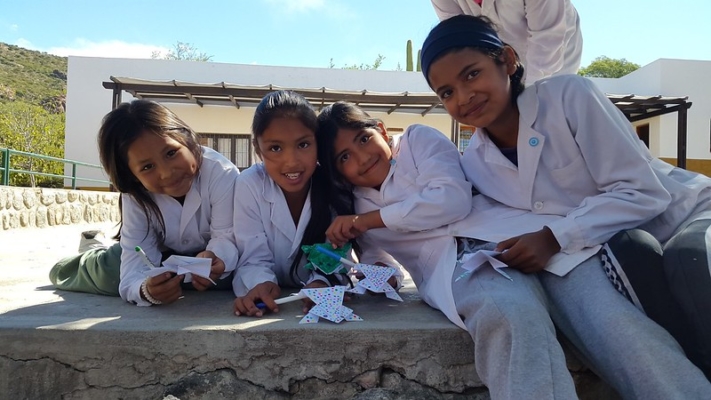10 Facts about Sanitation in Argentina

Sanitation has been an ongoing issue in Argentina. In the last two decades, more citizens have gained access to running water and sewage than ever before. This is partially due to ongoing work by the United Nations, as well as an increase in national infrastructure. This article will provide a list of discussions around sanitation in Argentina, including causes, pollution and how the local governments are creating change.
10 Facts About Sanitation in Argentina
- Fracking damages natural water supplies. In September 2019, in Argentina’s Neuquén province, a fire burned for 24 days until professionals were finally able to stop the blaze. It was one of the many accidents that fracking caused in the country. In addition, oil leaking into the local water supply is one of the most common problems with fracking. These issues impact some of the most vulnerable communities, such as low-income areas, families with children, the elderly and disabled and local indigenous people.
- Low-income neighborhoods regularly struggle for clean drinking water. In the last three decades, Argentina has made strides to increase the amount of clean drinking water throughout Argentina. However, low-income areas and rural parts of the country remain without properly sanitized water for much of the year. In neighborhoods such as Villa La Cava, just outside of the capital Buenos Aires, it has become common practice for people to create their own makeshift water filters. People have also put small amounts of bleach in containers in an effort to clean their water.
- The United Nations has committed itself to sanitation in Argentia. In the summer of 2010, the United Nations General Assembly declared clean drinking water and sanitation human rights. The U.N. revealed during 2010 that the city of Córdoba was without access to public water distribution networks. A report showed that the city relied on heavily polluted groundwater and wells. At the time, the U.N. required local authorities to provide each household in the city with 200 liters of clean water per day until public water services were fully accessible.
- Argentina set a goal to provide sewage to 75 percent of the population. Water professionals and government officials met in 2017 to discuss solutions for better access to sanitation. During the meeting, Argentina announced a new goal of providing sewage access to 75 percent of the population.
- About 90 percent of the population currently has access to sewage. The national government’s 2017 goal has proven to be successful. As of 2020, approximately 90 percent of the population has access to a sewage system. Much of this is due to the recent construction of a sewage pipe, which the Argentinian government has called “the most important one in 70 years.” The pipe cost $1.2 billion to make and runs 40 kilometers underground. These efforts have successfully increased the overall sanitation in Argentina.
- Proper sanitation in Argentina requires more infrastructure. Argentina received a loan of $320 million to improve the infrastructure in the Buenos Aires area. The money will go towards making much-needed improvements for sewage filtrations, renovating existing water treatment plants and 130 kilometers of water treatment pipes and expanding already-existing sewers. The loan specifically targets the infrastructure in the Buenos Aires region. While this is the most populated part of Argentina, much of the country still requires significant sanitation infrastructure.
- Regulation of public water utilities has grown in the last decade. Due to the involvement of the United Nations and a push from the public, government officials have become more focused on the regulation of public water utilities. Since the increasingly strict regulation of public waterways, the country’s overall sanitation has improved. This has led to a better quality of water not only in households but also in restaurants and schools.
- Water consumption in Argentina is among the highest in the world. ResearchGate reports that Argentina’s national water use is approximately 387 liters of water per person per day. This is some of the highest in the world. In Buenos Aires specifically, the water use is higher at 500 liters and people use it for personal use, hygiene, cleaning and drinking. In contrast, the Water Footprint Organization predicts that the average worldwide water consumption is 157 liters per person per day.
- The majority of water usage goes towards agriculture. Argentina uses most of its clean water for agriculture and farming. Because the country has such a vast variety of soil and tropics, farmers can grow many different types of crops to export throughout the world. Argentina is the largest international supplier of soybean meal and the third-largest supplier for corn. Pollution can be damaging to millions of these crops if water is not sanitary, resulting in lost time and money.
- Drier areas sometimes lack access to safely treated water. Because of Argentina’s varying climates, certain areas across the country are drier. These places are generally more rural and the people are less connected to the main pipes of larger cities. This can be dangerous because inhabitants often depend on rainwater collection for the ability to cook food and shower. When rain is scarce, people have to travel to lakes and rivers for water, making it difficult for Argentines to ensure that their water is safe to drink.
Sanitation in Argentina continues to be an ongoing challenge in rural areas, according to local townspeople. When the United Nations declared drinking water a human right in 2010, the Argentinian government began adding new infrastructure including pipes, sewage systems, water filtration tanks and water purification systems. While current efforts demonstrate that the level of sanitation in Argentina can undergo a major transformation, many areas throughout the country still struggle for clean drinking water each day.
– Asha Swann
Photo: Flickr
